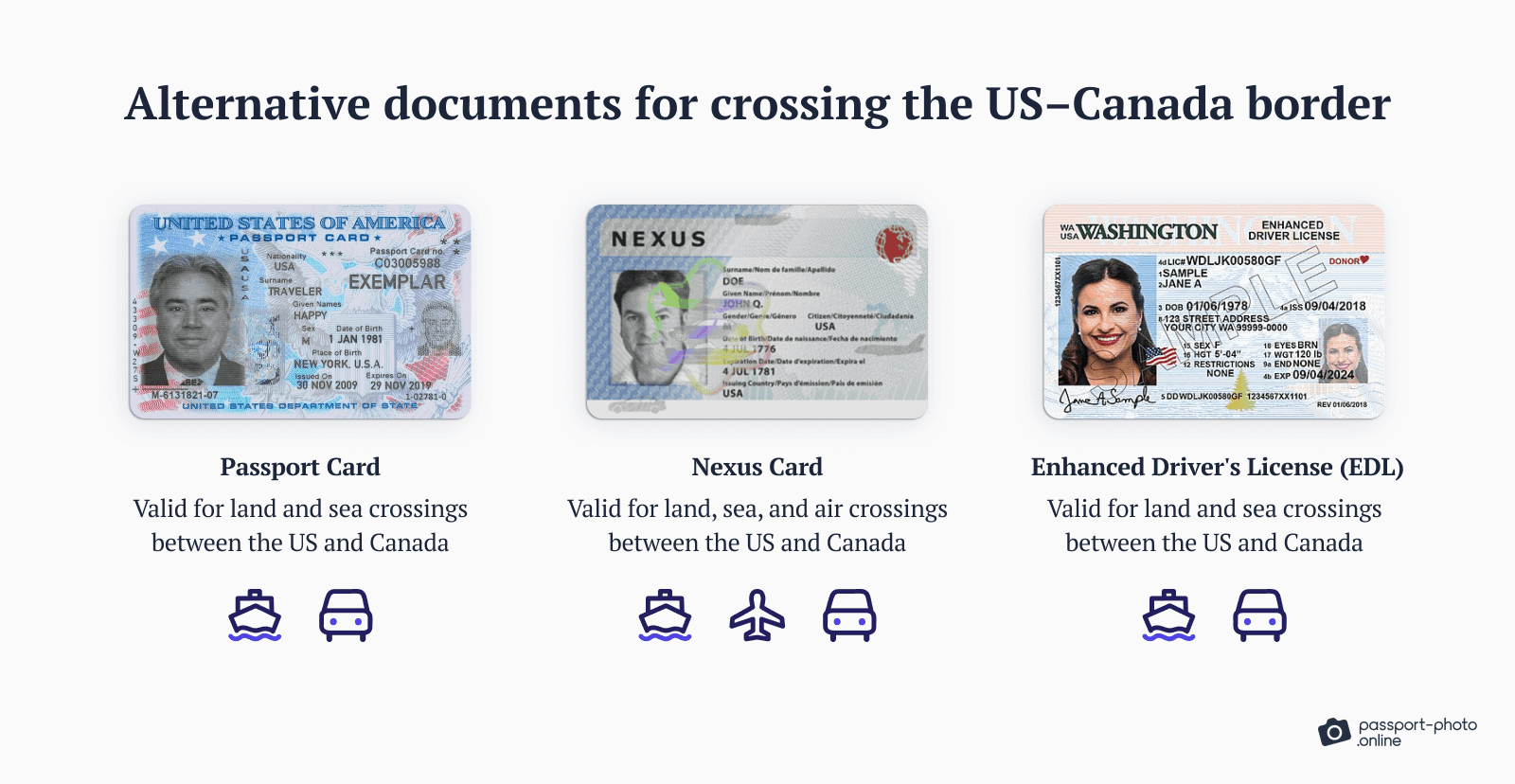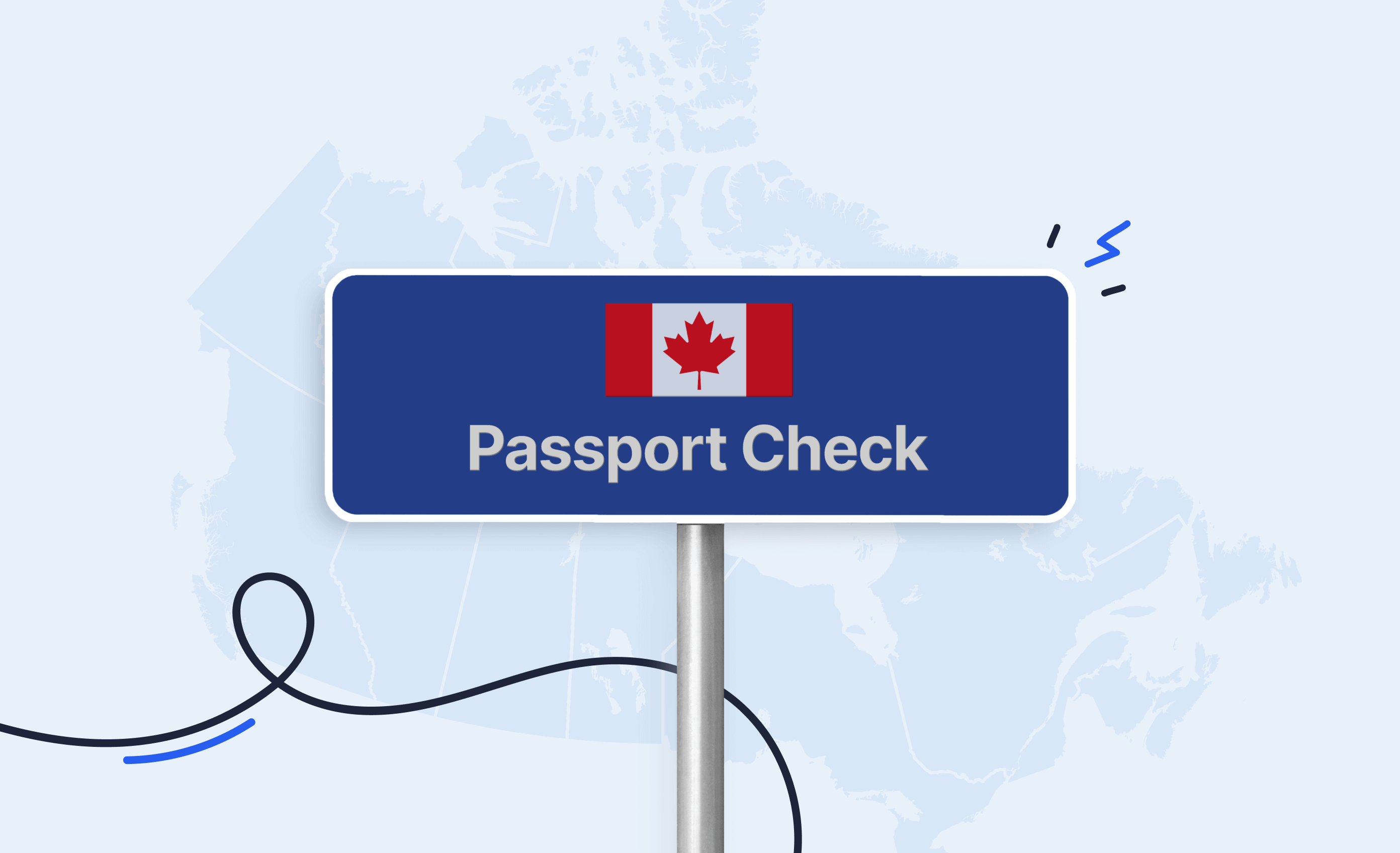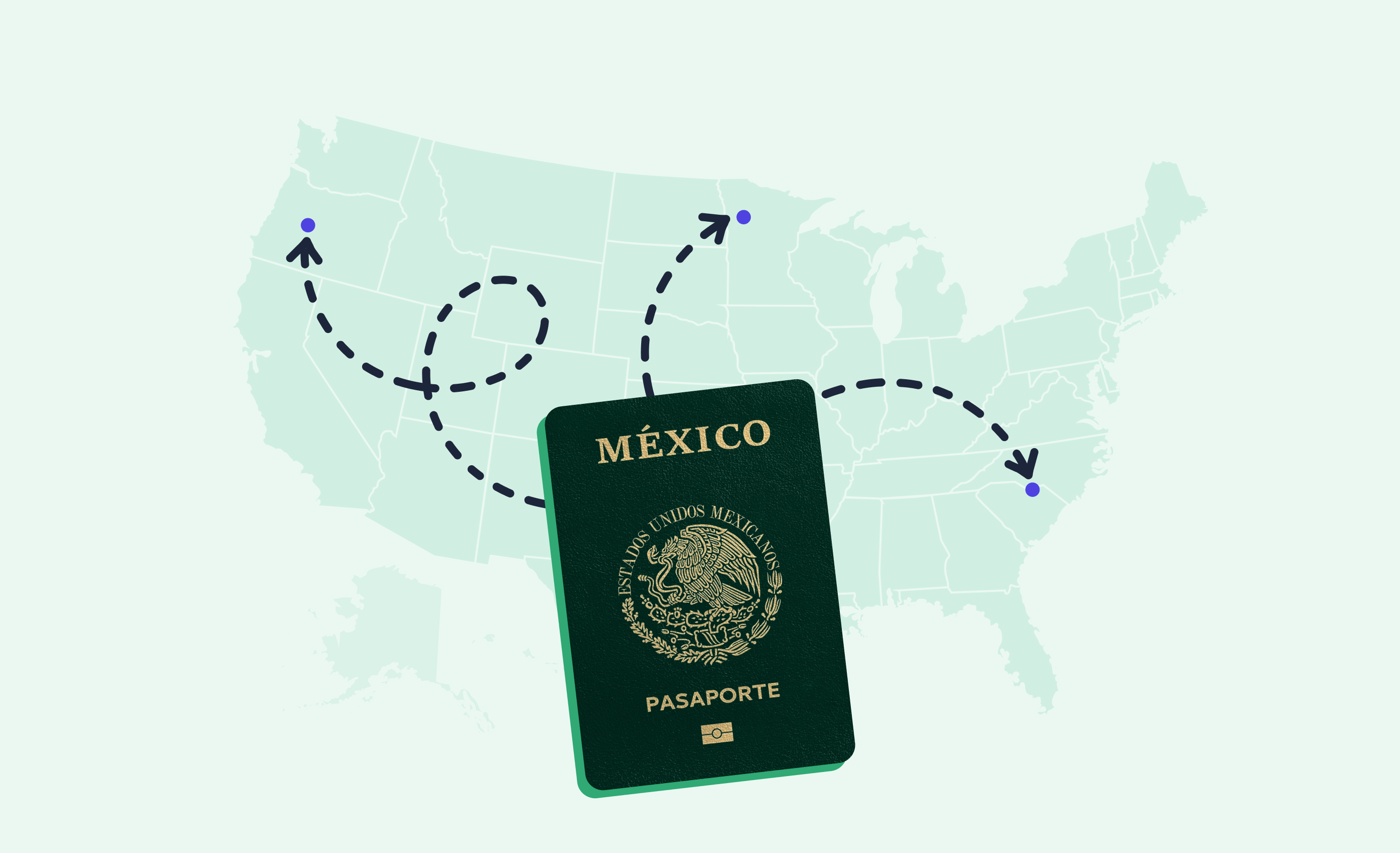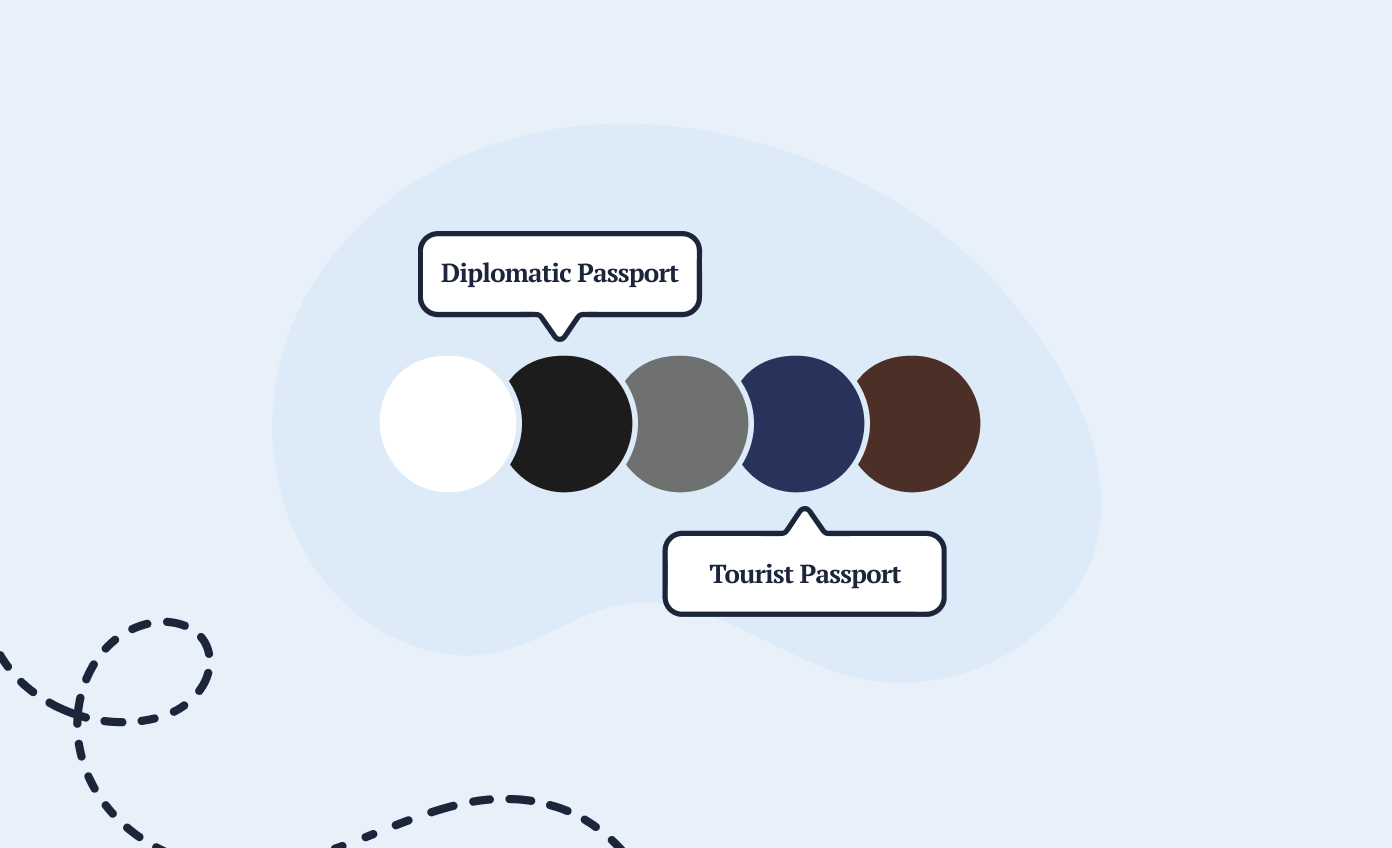Canada, with its vast expanse of natural beauty and bustling cities, is a top tourist destination for Americans, with almost 15 million visiting the country in 2019.
As the allure of our northern neighbor beckons, many Americans find themselves pondering, “Do you need a passport to go to Canada?”
With constantly evolving travel regulations, it’s paramount to stay informed and prepared.
This guide aims to demystify the travel requirements for those thinking about a journey across the northern border—no matter whether you’re entering by land, sea, or air.
Turn a selfie into a compliant passport photo with help from Passport Photo Online.
- Take a selfie or upload a photo.
- Passport Photo Online’s AI checker will improve it.
- Our compliance experts will double-check the results.
- Download your digital copy or order prints. That’s it!


Download a digital passport photo – compliant with US passport photo requirements. Have prints delivered to your address with a single click.
Verified by experts, 100% approval rate
Get accepted or 2x your money back
High-quality passport photos in just 3 clicks
10,000,000 satisfied customers to date!
I used Passport Photo Online and got a verified, compliant digital passport photo from a simple selfie. The whole process took about five minutes. The prints arrived just a few days later. I saved time and money and my passport application was accepted!
Need more info about the US passport application process? Check out the blog posts on the subject:
- DS-11 Passport Form: First Time and Renewals
- DS 82 Passport Form [Filling Instructions with Examples]
- US Passport Fees: Complete Information for 2023
So, do you need a passport to go to Canada?
The simple answer is yes.
Americans are required to have a valid passport or an equivalent document when venturing into Canadian territory.
This mandate isn’t just a mere formality but a result of the Western Hemisphere Travel Initiative (WHTI) passed by Congress in 2009.
Designed to bolster border security and streamline entry into the United States, the WHTI has set the passport as the gold standard for international travel.
Gone are the days when a simple driver’s license or birth certificate would suffice for a US–Canada border crossing (for adults).
Air travel: If you’re planning to fly into Canada, a passport is non-negotiable.
It’s the universally accepted identification document, ensuring a smooth entry into the country. While there are alternative documents for other modes of travel, when it comes to air travel, there’s no substitute for a passport.
Sea and road travel: For those who prefer scenic routes, whether by sea or road, the requirements are slightly more flexible.
While a passport remains the most straightforward document, alternatives like the NEXUS card or the Enhanced Driver’s License (available in select US states) can also be used.
However, it’s crucial to be aware of the limitations of each document.
For instance, a passport card, resembling a driver’s license, is valid for land or sea travel between the US and Canada but won’t be accepted for international flights.
Related: Find out if you need a passport to go to Niagara Falls, Canada.
Alternative documents for crossing the US–Canada border
While the passport remains the quintessential document for international travel, there are several alternative documents that travelers can use to cross the US–Canada border.
Each of these documents has its unique features, benefits, and limitations. Let’s explore them in detail:
Passport Card
A more compact and wallet-friendly alternative to the traditional passport book, the passport card is designed primarily for travelers who frequently cross the border by land or sea.
It’s important to note, however, that while the passport card is valid for land and sea crossings between the U.S. and Canada, it cannot be used for international air travel.
The card itself is similar in size to a credit card, making it convenient to carry, but its use is limited to specific travel scenarios.
NEXUS Card
Tailored for frequent travelers between the US and Canada, the NEXUS card offers pre-screened travelers expedited processing at designated border crossings.
Not only does it streamline the entry process, but it also serves as proof of identification and citizenship. To obtain a NEXUS card, travelers must undergo a rigorous background check and interview process. Once approved, the cardholder can enjoy the benefits of faster border crossings, whether traveling by air, land, or sea.
Enhanced Driver’s License (EDL)
Available in Michigan, Minnesota, New York, Vermont, and Washington, the Enhanced Driver’s License doubles as proof of identity and citizenship for land and sea travel between the US and Canada.
Embedded with a radio frequency identification chip, the EDL allows border officers to access a traveler’s biographic and biometric data in advance, facilitating a quicker border inspection process.
However, like the passport card, the EDL is not valid for international air travel.
Other modes of transport
If you’re venturing into Canada via boat (think sailboat or motor boat rather than a cruise), train, or on foot, it’s essential to be aware of the specific document requirements for each mode of transport.
While the aforementioned documents like the passport card, NEXUS card, and EDL are generally accepted, travelers should always verify the latest requirements before embarking on their journey (see the Entry, Exit, and Visa Requirments dropdown).
Pro tip: Learn about all the differences between US passport books and cards in the following blog post: US Passport Book vs Card.

Traveling with minors to Canada

Journeying with children brings its own set of joys and challenges.
When it comes to international travel, especially to a neighboring country like Canada, there are specific considerations and requirements to keep in mind.
Ensuring that minors have the appropriate documentation is paramount not only for a smooth entry but also for their safety and well-being.
If you’re flying with children to Canada, a valid passport for each child is mandatory.
While this might seem straightforward, it’s essential to ensure that the passports are up-to-date and have sufficient validity beyond the planned return date.
Remember, children’s passports have a shorter validity period than adult passports, typically five years, so frequent checks are advisable.
Sea and road travel

For those embarking on a road trip or a sea voyage with minors, the requirements are a tad more flexible.
While a child’s passport remains the most straightforward document, alternative documents like the NEXUS card can also be used, provided the child is a cardholder.
It’s also worth noting that some border officers might request additional documentation, especially if the child is traveling with one parent or a guardian.
Proof of relationship

One of the most crucial aspects of traveling with minors is establishing the relationship between the child and the accompanying adult(s).
In scenarios where both parents aren’t traveling with the child, it’s highly recommended to carry a letter of consent.
This letter, ideally notarized, should detail the permission granted by the absent parent(s) or legal guardian(s) for the child to travel.
Additionally, carrying copies of birth certificates or custody documents can further substantiate the relationship and expedite the border-crossing process.

Canada entry requirements for US citizens
Canada, with its picturesque landscapes and vibrant cities, has always been a favored destination for US citizens.
However, as with any international travel, it’s essential to be well-versed with the entry requirements to ensure a smooth and enjoyable visit.
Let’s delve into the specifics of what US citizens need to know when planning a trip to the Great White North.
Identification based on travel method

The mode of transport you choose to enter Canada plays a pivotal role in determining the identification documents required.
As previously discussed, air travelers must possess a valid passport. For those opting for land or sea routes, alternative documents like the NEXUS card, Enhanced Driver’s License, or the passport card are acceptable.
Regardless of the method, it’s always advisable to carry the most comprehensive form of identification to avoid any unforeseen complications.
Criminal admissibility

Canada has stringent regulations when it comes to allowing entry to individuals with a criminal record.
If you have been convicted of an offense, including DUIs, you might be deemed inadmissible to Canada.
However, there are pathways to overcome this, such as applying for a Temporary Resident Permit or going through the process of criminal rehabilitation.
It’s crucial to address any potential admissibility issues well in advance of your travel to avoid disappointment at the border.
Extended stays

While US citizens can visit Canada for up to six months without a visa, stays beyond this duration require additional documentation.
If you’re planning to work, study, or simply extend your vacation beyond 180 days, you’ll need to apply for the appropriate visa or permit.
It’s essential to understand the type of visa required based on the nature and duration of your stay, ensuring compliance with Canadian immigration regulations.
FAQ
Can I use my birth certificate to go to Canada?
Can you cross the border from Canada without a passport?
For land and sea crossings, US citizens can use:
• A Passport Card
• An Enhanced Driver’s License (available in select states)
• Trusted Traveler Program card like NEXUS
However, for air travel back into the US, a valid passport is non-negotiable.
Can I get back into the US without a passport?
Concluding Remarks
Canada, from its majestic Rockies to its cosmopolitan cities, has always held a special allure for Americans.
As we’ve navigated through the intricacies of travel documentation and requirements, it’s evident that being informed and prepared is the key to a hassle-free journey.
Whether you’re a seasoned traveler or someone planning their first Canadian escapade, understanding the nuances of cross-border travel is paramount.
As regulations evolve and change, staying updated ensures that your Canadian adventures are filled with memories of breathtaking Northern Lights rather than border paperwork.
Here at Passport Photo Online, we wish you many more maple-syrup-sweetened journeys to our friendly northern neighbor

Simon Wojtyczka is a writer with experience living and working in 7 countries, each adding depth to his work. Holding a Master’s in Applied Linguistics, he has a profound grasp of language and its intricate ties to culture.













